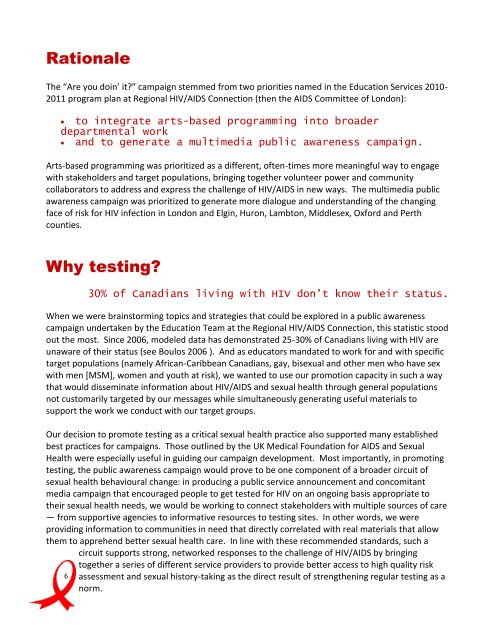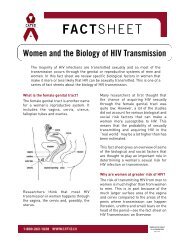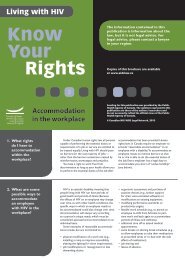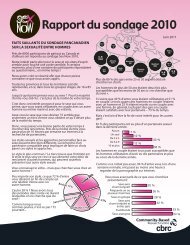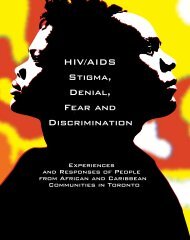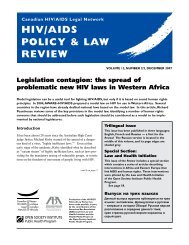âARE YOU DOIN' IT?â - Regional HIV/AIDS Connection
âARE YOU DOIN' IT?â - Regional HIV/AIDS Connection
âARE YOU DOIN' IT?â - Regional HIV/AIDS Connection
- No tags were found...
Create successful ePaper yourself
Turn your PDF publications into a flip-book with our unique Google optimized e-Paper software.
RationaleThe “Are you doin’ it?” campaign stemmed from two priorities named in the Education Services 2010-2011 program plan at <strong>Regional</strong> <strong>HIV</strong>/<strong>AIDS</strong> <strong>Connection</strong> (then the <strong>AIDS</strong> Committee of London): to integrate arts-based programming into broaderdepartmental work and to generate a multimedia public awareness campaign.Arts-based programming was prioritized as a different, often-times more meaningful way to engagewith stakeholders and target populations, bringing together volunteer power and communitycollaborators to address and express the challenge of <strong>HIV</strong>/<strong>AIDS</strong> in new ways. The multimedia publicawareness campaign was prioritized to generate more dialogue and understanding of the changingface of risk for <strong>HIV</strong> infection in London and Elgin, Huron, Lambton, Middlesex, Oxford and Perthcounties.Why testing?30% of Canadians living with <strong>HIV</strong> don’t know their status.When we were brainstorming topics and strategies that could be explored in a public awarenesscampaign undertaken by the Education Team at the <strong>Regional</strong> <strong>HIV</strong>/<strong>AIDS</strong> <strong>Connection</strong>, this statistic stoodout the most. Since 2006, modeled data has demonstrated 25-30% of Canadians living with <strong>HIV</strong> areunaware of their status (see Boulos 2006 ). And as educators mandated to work for and with specifictarget populations (namely African-Caribbean Canadians, gay, bisexual and other men who have sexwith men [MSM], women and youth at risk), we wanted to use our promotion capacity in such a waythat would disseminate information about <strong>HIV</strong>/<strong>AIDS</strong> and sexual health through general populationsnot customarily targeted by our messages while simultaneously generating useful materials tosupport the work we conduct with our target groups.Our decision to promote testing as a critical sexual health practice also supported many establishedbest practices for campaigns. Those outlined by the UK Medical Foundation for <strong>AIDS</strong> and SexualHealth were especially useful in guiding our campaign development. Most importantly, in promotingtesting, the public awareness campaign would prove to be one component of a broader circuit ofsexual health behavioural change: in producing a public service announcement and concomitantmedia campaign that encouraged people to get tested for <strong>HIV</strong> on an ongoing basis appropriate totheir sexual health needs, we would be working to connect stakeholders with multiple sources of care— from supportive agencies to informative resources to testing sites. In other words, we wereproviding information to communities in need that directly correlated with real materials that allowthem to apprehend better sexual health care. In line with these recommended standards, such acircuit supports strong, networked responses to the challenge of <strong>HIV</strong>/<strong>AIDS</strong> by bringingtogether a series of different service providers to provide better access to high quality risk6 assessment and sexual history-taking as the direct result of strengthening regular testing as anorm.


